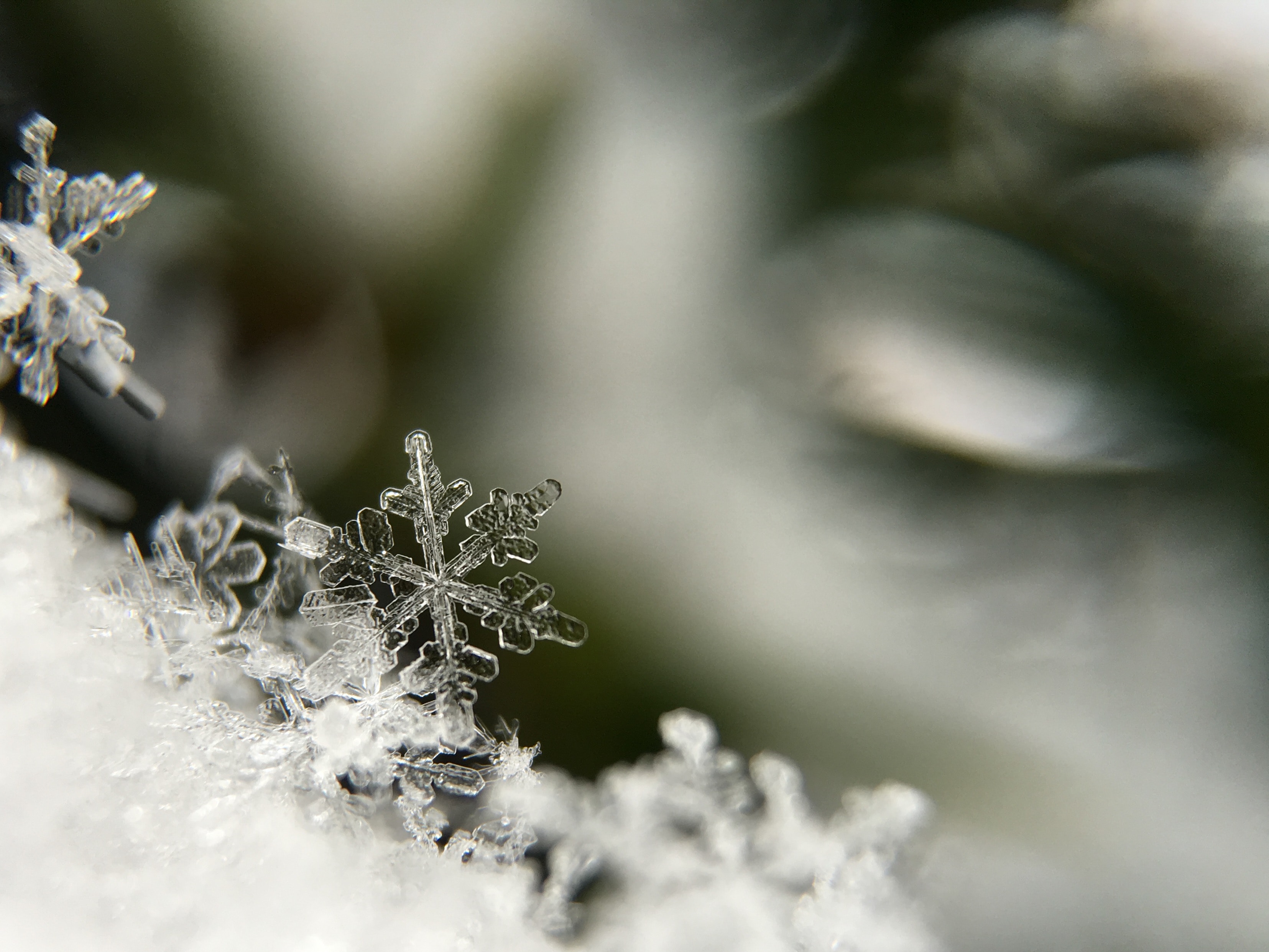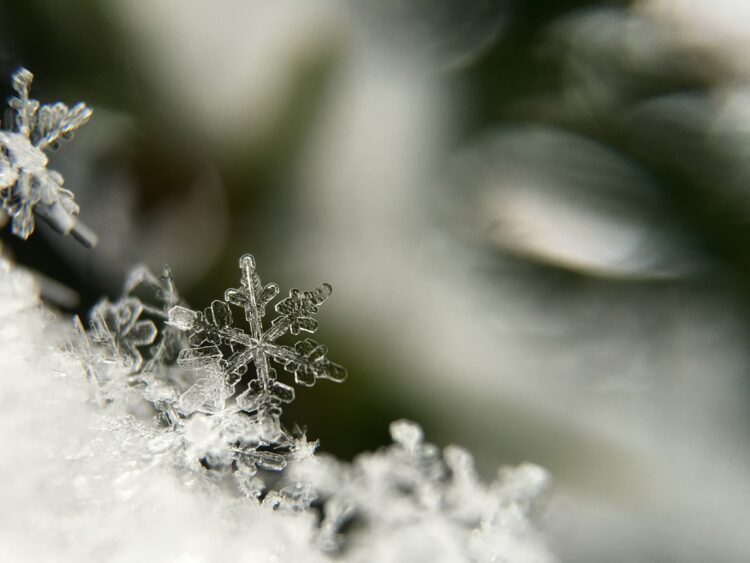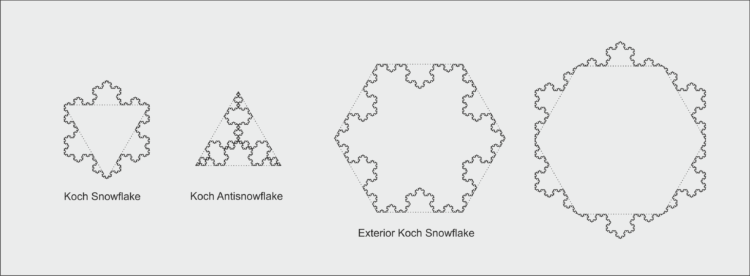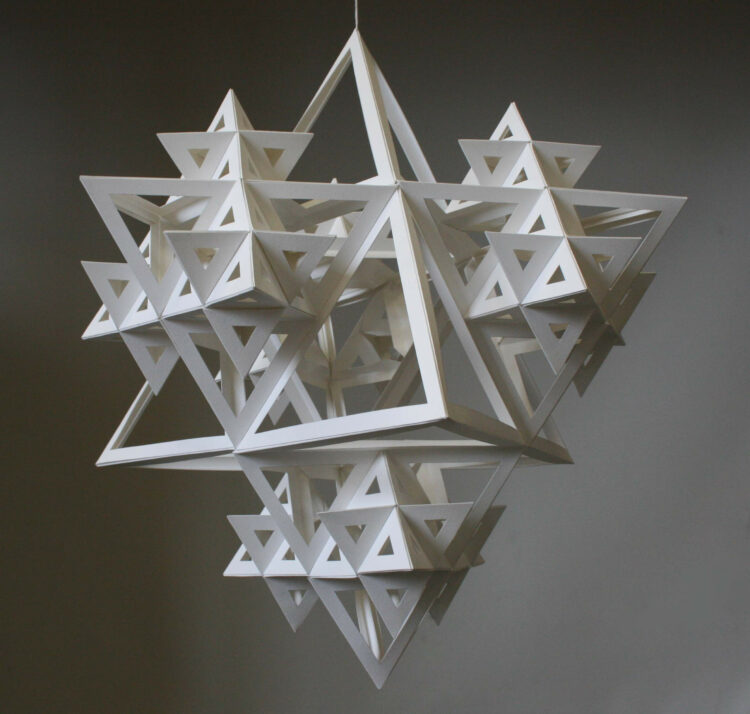As you know, a snow flake is an object composed of water molecules (not necessarily this millennial generation). These molecules do not have a common nerve system, DNA or a chief molecule that calls the shots. How do these molecules know where to go and hang in order to form a six-pointed star? And where do they get the audacity to form a different one every single time? How does one molecule in one leg of the flake know which singularly distinctive design the rest of the gang is putting together in the other legs of the flake, for the tiny molecule, essentially an equivalent to a million miles away?
An image that displays self-similarity in this fashion is called a fractal. One of the first works of Fractal Art was made in 1904 by a Swedish mathematician named Helge von Koch, and his piece was the so-called Koch Snow Flake. He took a triangle and added a similar but smaller triangle to each of the sides of the first one. Then he added smaller triangles to the sides of the second ones, again to the sides of the third ones, and so on at infinitum.
Every textbook reporting on the Koch Snow Flake will demand that if indeed we continue this process at infinitum we will add length to the outline at infinitum, hence producing an infinitely long line. And yes, theoretically this is true. But with every step the added triangle gets smaller and smaller, and in the real world there is no such thing as infinitely small. After a great many steps, the sides of the smallest triangle will be one quantum long, and no smaller triangle can be added. And that is more important than it seems.
The biggest difference between God’s snowflakes and Koch’s snowflakes is that God’s are all different while Koch’s are all the same. Koch’s Snow Flake is sterile while with God’s flakes, variety makes all the difference. This is why no two trees are the same, no two mountains are the same and no two humans are the same. But there’s more:
Koch’s tiniest triangles are identical to the big triangle, but way down the line this concoction proves to be an impossible structure. It’s an un-fractal since the tiniest triangles will lose their form and fuzz up. A sleek triangle like that will only occur in the minds of Koch and perhaps Plato, but not in nature. Nature produces snowflakes that are never the same because the large-scale phenomenon doesn’t mimic the shapeof the small-scale phenomenon, but the behavior: unpredictability, randomness and sovereignty. Math has no way of generating randomness.
Since math is the language of science, science has pronounced its own incompleteness; there is something beyond the reach of scientific approach. Scientific truth is not equal to absolute Truth. All-encompassing Truth exists beyond the bubble of science and shouldn’t be sought in facts and theories.
*The views and opinions expressed on this website are solely those of the original authors and contributors. These views and opinions do not necessarily represent those of Spotter Up Magazine, the administrative staff, and/or any/all contributors to this site.




